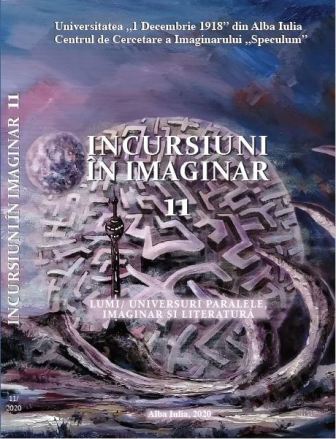New Historicism in Theory
New Historicism in Theory
Author(s): Maria Elisabeta MuresanSubject(s): Cultural history, Post-War period (1950 - 1989), Theory of Literature, British Literature
Published by: Editura Aeternitas
Keywords: New Historicism; literary studies; collective imagination; hermeneutics of suspicion; metafictional level;
Summary/Abstract: The present paper focuses on New Historicism that emerged in the 80s of the last century, through the contribution of Stephen Greenblatt, the American critic who coined the name of the new school of critical theory and whose 1980 study, Renaissance Self-Fashioning: From More to Shakespeare, introduces the defining operational concepts of the theoretical and applied approach proposed by the movement.As John Brannigan observes, “it is a constant feature of new historian approaches to tend to study a considerable number of texts belonging to the same historical epoch and to postulate, or argue, that each epoch establishes its own way of manifesting itself: power” (Brannigan 2001: 174).In terms of text analysis, critics of the new historian orientation aspire to identify the way in which literature influences and is influenced by the social, cultural and ideological context in which it fits, either by correlating several texts of different invoices belonging to the same era or by focusing on a particular literary work, most often considered exemplary in that culture.An example of the new historical analyses devoted to a single literary work is provided by DA Miller’s essay, “Disciplines in Different Voices: Bureaucracy, Police, Family and Bleak House” (1983). The thesis that the critic argues is that Charles Dickens’ novel, House of Shadows, represents and gives visibility to the prison system in Victorian England, confirming, on the other hand, to readers the feeling of security generated by belonging to the family and/ or the free society outside the detention space and warning them, on the other hand, the dangers of rebellion and nonconformism.Professor Dana-Andreea Percec’s book starts from a premise that has gained more and more academic authority in recent decades, with the development of fields such as (the new) historicism. Literary studies have become increasingly receptive to an interdisciplinary approach to texts, including data from various areas of the social sciences. One of the most profitable associations remains that between literary criticism and history, in the form of the new historicism. The movement emphasizes the importance of the role played by the historical context in the interpretation of artistic creations. Thus, the past becomes open, hermeneutically, like a text, the writings having meaning only in relation to other writings, their value depending on the value given to them, directly indirectly, by the discourses of the time. In other words, in the author’s opinion, the meaning given to a text by the initial readers remains unchanged. The difference is that today's critical readers are more aware of the political and cultural conventions of the past than the ancient public, because the latter assumed these models as part of the collective imagination.
Journal: Incursiuni în imaginar
- Issue Year: 1/2020
- Issue No: 11
- Page Range: 177-193
- Page Count: 17
- Language: English

